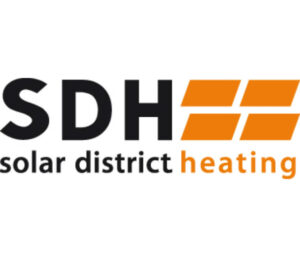SDHp2m is a H2020 European Project whose name stands for Solar District Heating (SDH) and actions from Policy to Market. The project started in January 2016 and has a duration of 36 months.
 The main goal of the SDHp2m project is the direct mobilisation of investments in solar district heating and achieving, consequently, a significant market roll-out.
The main goal of the SDHp2m project is the direct mobilisation of investments in solar district heating and achieving, consequently, a significant market roll-out.
The region of Thuringia in Germany has strongly engaged with the development of this project, as its regulating regional authority is a project partner, together with the region of Styria in Austria and the region of Rhône-Alpes in France.
The region of Thuringia has been actively advocating for a more sustainable, efficient and cleaner energy system under the German Energy Transition program. This region integrates in the transition process not only municipalities, but also local stakeholders, academic experts and citizens of the region, making the engagement towards renewable energy, such as solar thermal, a community matter.
Euroheat & Power had the opportunity to interview one of the representatives from the regional government of Thuringia, Mr. Martin Siewert, about the motivation of the region to be a project partner of SDHp2m.
Mr. Siewert, the region of Thuringia has engaged actively in the German and European energy transition, focusing especially in solar thermal energy. What are the reasons why the region of Thuringia decided to be a SDHp2m project partner?
In an energy monitoring carried out by the region of Thuringia in 2013, it was found out that the potential for generating heat from biomass and residual materials has been already largely exploited. On the other hand, the study revealed that solar thermal energy has a strong potential to be tapped.
In light of these results the regional government decided to launch the ‘Thuringia Solar Thermal Initiative’. Within this initiative, the region designed a subsidy scheme for the deployment of solar thermal plants and, in addition, the regional authority discussed actively with local actors (scientist, experts and municipalities) about the possible use of solar thermal energy in existing networks, larger existing buildings and regarding new isolated applications of heating systems.
Considering these previous steps and interests in solar thermal energy, accepting to be a partner of the project SDHp2m was a logical consequence for our region.
What does the region of Thuringia aim at with the implementation of further advanced policies and support measures developed during the project’s scope?
The region of Thuringia expects to replace its use of fossil fuels by increasing the proportion of solar thermal energy in the regional energy mix. Consequently, the regional government intends to reduce its greenhouse emission levels.
Another goal is the long-term stabilisation of heat costs for end-consumers.
The results obtained during this demonstration project will be used to support the deployment of SDH technology after the finalisation of SDHp2m.
The SDHp2m project started in January 2016, twelve months ago; in this period of time, have you already experienced any benefit from joining this European project?
The project has been active for only a short period of time. Therefore, we do not have results at the moment that can be used for the deployment of SDH plants.
However, the experiences and lessons learned form other SDHp2m partners are likely to accelerate the implementation of specific projects.
Mr. Siewert, thank you very much for taking the time to reply to our questions and for such informative answers. From Euroheat & Power, we hope the Thuringia region will continue to invest in the deployment of solar district heating with success and achieves its decarbonisation and sustainable energy goals.
More information about the project can be found here.

The SDHp2m project has received funding from the European Union’s Horizon 2020 research and innovation programme under grant agreement No 691624.